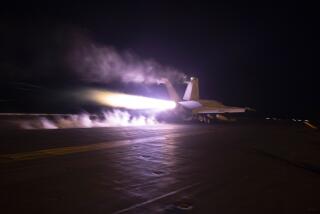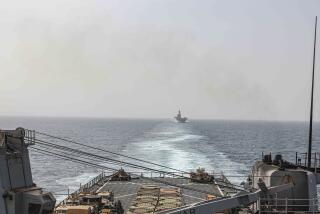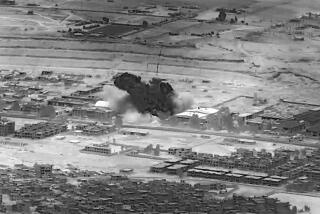No Attacks Mar Patrols Over Iraq
- Share via
WASHINGTON — U.S. and British planes returned safely to their bases Thursday after patrolling Iraq’s “no-fly” zones, a Pentagon spokesman said, as the United States began to scale down its presence in the Persian Gulf.
A Defense Department spokesman said Thursday’s flights were routine in the northern and southern no-fly zones, despite renewed Iraqi threats to challenge U.S. and British planes monitoring the Western-established areas.
“No violations have been reported in either no-fly zone,” said Marine Corps Lt. Col. Patrick Sivigny, a Pentagon spokesman.
U.S. and British planes monitoring the northern no-fly zone had returned safely to Incirlik, Turkey, while aircraft patrolling the southern area were back at their bases in the Gulf region.
On Wednesday, U.S. planes attacked Iraqi targets for the second time this week after Baghdad fired missiles at a British aircraft monitoring the southern no-fly zone.
There was a similar clash in the northern exclusion area Monday when U.S. warplanes from Incirlik attacked an Iraqi antiaircraft site after it launched missiles at the jets.
Despite the latest clashes with Iraqi forces, the United States began to scale down its presence in the Gulf. The Pentagon said the aircraft carrier Enterprise battle group was set to leave the Gulf region as planned by the end of this week.
The number of U.S. troops in the region will soon drop to about 22,000 from about 29,900 during the 70-hour bombardment of Iraq that ended Dec. 19.
Since the U.S.-British air and missile strikes against Iraq ended, Baghdad has said defiantly that it will no longer allow Western planes to enforce the no-fly zones, which were set up after the 1991 Persian Gulf War to protect the Kurds in the north and Shiite Muslims in the south.
More to Read
Sign up for Essential California
The most important California stories and recommendations in your inbox every morning.
You may occasionally receive promotional content from the Los Angeles Times.













